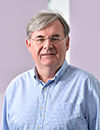
17th Lab-on-a-Chip and Microfluidics World Congress 2024
09:00
2024年11月18日
Slate Room

Steve Soper, Foundation Distinguished Professor; Director, Center of BioModular Multi-scale System for Precision Medicine, Adjunct Professor, Ulsan National Institute of Science & Technology, The University of Kansas
Pre-Conference Training Course from 09:00-11:00
Microfluidics and Nanofluidics for Diagnostic Tests
[Separate Registration Required to Attend this Pre-Conference Training Course]
11:00
2024年11月18日
Slate Room

Leanna Levine, Founder & CEO, ALine, Inc. United States of America
Pre-Conference Training Course from 11:00-13:00
Microfluidic Product Development
[Separate Registration Required to Attend this Pre-Conference Training Course]
This training course will explore the translation of science and nascent engineering programs into a well-structured product development program to address Reduction to Practice or proof of concept; Human factors engineering - what is it and why it matters; Design Control and Risk Control Roadmap for Development; Design for Manufacture and Assembly; Scale -up progression and manufacturing methods.
**A Must-Attend for Companies Embarking on Microfluidic Product Development**
13:00
2024年11月18日
Conference Entrance
Main Conference Registration, Materials Pick-Up and Networking in the Exhibit Hall
13:30
2024年11月18日
Plenary Ballroom
Lab-on-a-Chip and Microfluidics World Congress 2024
Opening Plenary Session
13:45
2024年11月18日
Plenary Ballroom
Welcome and Introduction to the Lab-on-a-Chip and Microfluidics World Congress 2024 by the Chairs: Professor Dino Di Carlo and Dr. Leanna Levine
2024 Conference Focus and Themes Highlighted Over the 3-Day Event
14:00
2024年11月18日
Plenary Ballroom

Steven C. George, Edward Teller Distinguished Professor and Chair, Department of Biomedical Engineering, University of California-Davis, United States of America
Organ-on-Chip Systems to Probe Extracellular Vesicle Transport Across Biological Barriers
Extracellular vesicles (EVs) are small (50-150 nm diameter) composite particles secreted by cells and comprised of a lipid-based membrane surrounding an aqueous core. The membrane and core can each incorporate a wide range of molecules (e.g., proteins, nucleic acids) that can impact cellular function; thus, EVs can impact in vivo biology, but have also generated significant excitement for their potential theranostic (therapeutic and diagnostic) applications in cancer. How EVs are transported (convection, diffusion, and binding) across biological barriers including the vascular endothelium and extracellular matrix is poorly understood. Our early work demonstrates that a subpopulation of EVs are transported across the endothelium using receptor-mediated transcytosis, and predominantly by convection (not diffusion) through the extracellular space. During transport through the ECM, the EVs can bind (and unbind) to form a spatial gradient which may have biological implications for cell migration and tumor progression. Examination of EV transport across biological barriers will not only enhance our understanding of the dynamic tumor microenvironment, but also provide the framework to design artificial nanovesicles as novel drug delivery vehicles.
14:30
2024年11月18日
Plenary Ballroom

Abraham Lee, Chancellor’s Professor, Biomedical Engineering & Director, Center for Advanced Design & Manufacturing of Integrated Microfluidics, University of California-Irvine, United States of America
Microfluidic Immunoengineering
The COVID-19 pandemic, and the subsequent successful development of the mRNA vaccine has ushered in an era of immunoengineering. Immunoengineering involves the “reprogramming” of the immune system to overcome limitations of the innate or adaptive immune responses that the body naturally produces. Recent developments of microfluidics for precision medicine applications such as liquid biopsy, cell therapy, single cell analysis, and microphysiological systems have contributed to the general field of immunoengineering. Specifically, adoptive cell therapy (ACT) is a type of immunotherapy that involves the processing of blood from a donor to isolate immune cells (e.g. T cells) for genetic manipulation followed by reinfusion of the cells into patients. This process that starts from blood drawn from one person and ends with specialized engineered cells delivered to the patient includes multiple tedious and costly steps, and can require a long time that the patient may not have. Microfluidic technologies can address most steps of this complex cell manufacturing process, including cell harvesting, cell isolation, cell activation and expansion, and cell transfection. In this talk I will introduce two microfluidic platforms in my lab applied to the cellular engineering processes, one is the lateral cavity acoustic transducer (LCAT) and the other is droplet microfluidics. Based on LCAT, we developed the acoustic electric shear orbiting poration (AESOP) device to uniformly deliver genetic cargos into a large population of cells simultaneously. We demonstrate high quality transfected cells with controlled dosage delivery as well as serial delivery of different genetic cargos. These capabilities can be used to optimize the therapeutic efficacy of the engineered cells and also combine it with promising gene editing tools to further condition the cells for more specific in vivo targeting. Based on droplet microfluidics we constructed bottom-up artificial antigen presenting cells (aAPCs) for antigen-specific T cell activation. By trapping single cells in microfluidic droplet compartments, we are able to study the 3D cell morphology of both the cell surface and also its intracellular constituents to further understand immune cell activation and immune cell synapses.
15:00
2024年11月18日
Plenary Ballroom

Claudia Gärtner, CEO, microfluidic ChipShop GmbH, Germany
Title to be Confirmed
15:30
2024年11月18日
Exhibit Hall
Mid-Afternoon Coffee Break and Networking
16:15
2024年11月18日
Plenary Ballroom

Roger Kamm, Cecil and Ida Green Distinguished Professor of Biological and Mechanical Engineering, Massachusetts Institute of Technology (MIT), United States of America
Brain Neurovascular Models and Their Application to Modeling Transport in Health and Disease
Despite recent FDA approval of two drugs to reduce amyloid beta (A-beta) plaque in Alzheimer’s patients, a true cure of the disease remains elusive since they simply reduce the rate of cognitive decline. Also, there is a need for deeper understanding of drug and toxin transport across the blood-brain barrier (BBB), which is difficult to obtain from animal experiments or human testing. To meet this need, a variety of in vitro microphysiological models have been developed that can accurately recapitulate the barrier properties of the brain vasculature in the context of A-beta clearance from, and toxin or drug entry into, brain tissues. This talk will focus on a progression of models developed to mimic both the healthy and diseased brain and to predict transport properties. Cells used in these models can be either primary or iPS cell-derived with the latter being increasingly used to produce standardized models with greater consistency over time and appropriate for screening by pharma and biotech companies.
16:45
2024年11月18日
Plenary Ballroom

Jim Heath, President, Institute for Systems Biology, United States of America
New Technologies for Accelerating Progress in Cancer Immunotherapies
17:15
2024年11月18日
Plenary Ballroom

Eric Diebold
WW Vice President, Research and Development, BD Biosciences, United States of America
Integrating Innovations for the Advancement of Single Cell Analysis
2024 represents the 50th anniversary of the first commercial cell sorter, commercialized by BD Biosciences. In this presentation, I will cover some of the key innovations in flow cytometry over this period, and discuss some of the more recent innovations in our industry that are catapulting high parameter single cell analysis into the future.
17:45
2024年11月18日
Plenary Ballroom

Martyn Boutelle, Professor of Biomedical Sensors Engineering, Imperial College London
Developing Microfluidic Biosensors and Sensors for Use in Acute Hospital Care - Towards Real-Time Point of Care Diagnostics
Acute illness and surgery are moments when normal patient physiology control mechanisms are put under great stress. The concentration of biomarker molecules in the tissue itself or in biofluids such as blood or sweat can give important information about the state of the patient. Our view is that to do such monitoring effectively ideally requires moment-by-moment measurement of biofluid or tissue concentrations. This information can then empower the clinical care team to improve patient care. We have been developing a range of sensing and biosensing solutions for the invasive, minimally invasive, and non-invasive monitoring of people in healthcare situations. Microfluidics provide a valuable means of clinical sampling and robust quantification of measured signals. I will describe the clinical need for monitoring and the key challenges in the development of integrated sensing devices. The talk will be illustrated with recent data obtained during surgery and the neonatal intensive care unit.
18:15
2024年11月18日
Plenary Ballroom
Patient Advocate Speaker Details to be Announced
Patient Advocate for Cancer and Technology Development
18:45
2024年11月18日
Exhibit Hall
Networking Reception in the Exhibit Hall with Beer, Wine and Dinner.
Network with Colleagues, Engage with the Exhibitors and View Posters.
20:15
2024年11月18日
Exhibit Hall
Close of Day 1 of the Conference
20:30
2024年11月18日
Slate Room

Noah Malmstadt, Professor of Chemical Engineering and Materials Science, University of Southern California, United States of America
3D-Printing of Microfluidics Training Course
[Separate Registration Required to Attend this Training Course]
07:30
2024年11月19日
Exhibit Hall
Morning Coffee, Continental Breakfast and Networking in the Exhibit Hall
08:45
2024年11月19日
Ballroom A
Session Title: Emerging Themes and Trends in Lab-on-a-Chip and Microfluidics 2024
09:00
2024年11月19日
Ballroom A

Dino Di Carlo, Armond and Elena Hairapetian Chair in Engineering and Medicine, Professor and Chair of Bioengineering, University of California-Los Angeles, United States of America
Accelerating Life Science Research: From Lab-on-a-Chip to Lab-on-a-Particle
Building on the successes of Lab on a Chip technologies, a new frontier is emerging in the form of Lab on a Particle (LoP) platforms. These innovative technologies complement traditional microfluidic systems by utilizing microparticles to confine samples and facilitate microscale reactions. Unlike the static nature of microfluidic chips, LoP platforms offer dynamic and flexible solutions where microparticles act as discrete, suspendable compartments capable of performing highly parallelized assays. This advancement significantly enhances the ability to analyze molecules and cells with higher throughput, while incorporating sophisticated assays. The microparticles used in LoP assays are meticulously engineered with unique shapes and chemistries, providing functionalities that were previously unattainable with conventional microfluidic chips. These particles can template droplets, capture specific molecules, cells, and secretions, or even barcode reactions for multiplexed analysis. The integration of essential assay materials and structures directly into each particle eliminates the dependency on custom chips or specialized instrumentation. As a result, LoP platforms are compatible with standard laboratory instruments such as flow cytometers, fluorescence activated cell sorters (FACS), microscopes, and other imaging devices. This compatibility positions LoP technologies akin to software applications, or apps, operating on commonly available life science instrument hardware. This analogy highlights the transformative potential of LoP platforms in democratizing access to advanced assay capabilities. By circumventing the need for specialized equipment, these microparticle-based systems can accelerate adoption and broaden the impact of microfluidic innovations across diverse research fields. In this keynote presentation, we will explore some recent Lab on a Chip innovations developed in our lab, including Ferrobotics, and introduce recent Lab on a Particle platforms and applications. We will discuss demonstrated applications, such as in antibody discovery, elucidating links between cell secretions and gene expression, and identifying therapeutically optimal cells, ultimately highlighting the future prospects of LoP technologies in accelerating all life sciences.
09:30
2024年11月19日
Ballroom A

Adam Abate, Professor of Bioengineering and Therapeutic Sciences, University of California-San Francisco, United States of America
Single Cell and Virus Sequencing to Support HIV Cure Studies
HIV remains a global health challenge, with ongoing infections and high morbidity and mortality. While antiretroviral therapy (ART) effectively controls the virus, it is not a cure. Achieving a cure requires understanding how HIV establishes long-term infection by interacting with the immune system and maintaining reservoirs of infected cells. These cells allow the virus to rebound when ART is stopped, yet identifying and studying them remains difficult because the only definitive marker is the presence of the virus integrated into the genome. In this talk, I will present new tools we've developed using nucleic acid cytometry and single-cell genomics, which allow for the first detailed study of these HIV reservoir cells. These advancements will enhance our ability to study HIV persistence, offering a critical pathway to new treatment strategies and ultimately advancing efforts toward a cure.
10:00
2024年11月19日
Ballroom A

Steve Soper, Foundation Distinguished Professor; Director, Center of BioModular Multi-scale System for Precision Medicine, Adjunct Professor, Ulsan National Institute of Science & Technology, The University of Kansas
Applications of Resistive Pulse Sensing in Biology and Medicine
Resistive Pulse Sensing (RPS) is a label-free and single-molecule detection approach that requires simple instrumentation to implement and as such, can be mobilized to be integrated into in vitro diagnostic assays for not only detecting but identifying key disease-associated biomarkers with high analytical sensitivity. Thus, it makes it a logical choice for coupling with liquid biopsy markers for the precision management of a variety of diseases. We have developed a unique measurement modality and sensor technology (dual in-plane nanopore sensor) that couples RPS to nanoscale electrophoresis, which has recently garnered attention due to unique separation modalities that occur in the nanometer dimension that do not occur in the microscale domain. This results scale-dependent phenomena such as high surface area-to-volume ratios, electrical double layer overlap generating parabolic flows, concentration polarization, transverse electromigration, surface charge dominating flow, and surface roughness effects. Nanochip electrophoresis devices consist of columns with dimensions ranging from 1 to 100 nm (effective diameter) that are 10’s of microns in length. In this talk, I will discuss the operational parameters and unique application of our dual in-plane nanopore sensor for three compelling applications: (1) determining the fill status (empty versus full) of adeno-associated viruses (AAVs), which serve as carriers of gene therapy drugs; (2) peptide fingerprinting of single protein molecules; and (3) DNA/RNA single-molecule sequencing.
10:30
2024年11月19日
Exhibit Hall
Mid-Morning Coffee Break and Networking in the Exhibit Hall - Meet Exhibitors and View Posters
11:00
2024年11月19日
Ballroom A
View Second Half of Morning Session in the Organoids Track Agenda
12:30
2024年11月19日
Exhibit Hall
Networking Buffet Luncheon -- Network with Exhibitors and Colleagues, View Posters
13:20
2024年11月19日
Ballroom A
View Organoids and Organs-on-Chips Session from 13:30-15:00 in the Organoids Track Agenda
15:00
2024年11月19日
Exhibit Hall
Mid-Afternoon Coffee Break and Networking in the Exhibit Hall
15:25
2024年11月19日
Ballroom A
Session Title: 3D-Printing of Microfluidics
15:30
2024年11月19日
Ballroom A

Gregory Nordin, Professor, Brigham Young University, United States of America
Pushing Boundaries: High Resolution 3D Printing for Microfluidics
Interest in 3D printing for microfluidic device fabrication is high, but routinely achieving sub-100 μm features remains a challenge. This is because microfluidic devices primarily consist of negative space features, which require different considerations compared to positive space features common in other 3D printing applications. To address this, we have developed our own stereolithographic 3D printers and materials tailored to these requirements to explore what is possible with 3D printing for high resolution microfluidics. Our approach can create channels as small as 2 μm x 2 μm. We have also developed active elements, such as valves and pumps, with the smallest valves having an active area of just 15 μm x 15 μm. With these capabilities, we have demonstrated highly integrated 3D printed microfluidic components, such as a 10-stage 2-fold serial dilutor within a 2.2 mm x 1.1 mm footprint. Additionally, we have created a fast (~1 ms) and compact (<1 mm^3) 3D printed mixer using a new multi-resolution 3D printing method. These advancements position 3D printing as an attractive alternative to costly cleanroom fabrication processes. They offer the added benefit of fast (~5-15 minute), parallel fabrication of multiple devices in a single print run due to their small size, facilitating a path to mass manufacturing.
16:00
2024年11月19日
Ballroom A

Jeff Schultz, Co-Founder, Phase, Inc., United States of America
A Platform For Commercialization of 3D Printed Microfluidics Embedded into Standard Well Plates
Phase is developing an additive manufacturing process, termed 3D PDMS, to 3D print microfluidic devices using conventional thermally curable PDMS. To enable academic and industrial adoption of these advanced microfluidic devices, Phase is developing their VivorrayTM plate systems, which are sterilizable 96- and 384-well plates made from a USP Class VI certified material, that integrates 3D PDMS MF devices into well plates with industry standard geometries for automated high-throughput workflows. The resulting system will be a single fully automated microfluidic manufacturing platform with the design freedom of 3D printing capable of manufacturing complex PDMS microfluidic devices.
16:30
2024年11月19日
Ballroom A

Pranav Soman, Professor, Biomedical and Chemical Engineering, Syracuse University; IPA Program Director, Advanced Manufacturing (AM), National Science Foundation (NSF), United States of America
Addressing Key Challenges in Multi-Material and Multi-scale Digital Projection Stereolithography
This presentation will include two research projects conducted at Syracuse University and few outreach slides related to opportunities at NSF for the Additive Manufacturing community. First project, entitled, Multi-material Gradient Printing Using Meniscus-enabled Projection Stereolithography (MAPS) addresses current challenges related to vat based multi-material printing associated with hardware modifications, control systems, cross-contamination, waste, and resin properties. MAPS is a vat-free method that relies on generating and maintaining a resin meniscus between a cross-linked structure and bottom window to print lateral, vertical, discrete, or gradient multi-material 3D structures with no waste and user-defined mixing between layers. We show that MAPS can print 3D structures with gradient properties in mechanical stiffness, opacity, surface energy, cell densities, and magnetic properties. Second project, entitled Multipath projection stereolithography (MPS) addresses the inherent tradeoffs between print resolution, design complexity, and built sizes. Inspired by microscopes that could switch objectives to achieve multi-scale imaging, we report a new optical printer coined as MPS specifically designed for printing microfluidic devices. MPS is designed to switch between high- and low-resolution optical paths to generate centimeter sized constructs (3cm x 6cm) with a feature resolution of ~10µm. Using a test-case of micromixers, we show user-defined CAD models can be directly input to an automated slicing software to define printing of low-resolution features with embedded micro-scale fins. A new computational model, validated using experimental results, was used to simulate various fin designs and experiments were conducted to verify simulated mixing efficiencies.
17:00
2024年11月19日
Ballroom A

Bryce Hiller, Digital Education Coordinator, ASIGA, United States of America
ASIGA Advancing 3D Printed Microfluidics
ASIGA is a leader in reliable and precise DLP 3D Printers. In this talk we will show you how to leverage our open material system and voxel-level control over all parameters in our 3D printers to create cutting edge Microfluidic Chips.
17:30
2024年11月19日
Ballroom A

Nicolas Brillouet, CTO, Kloé, France
Microfluidics and Mask-Aligner: How to Make the Right Choice?
Mask-aligners have been used for decades as key technological equipments to manufacture microchips, in particular in semiconductor industry. More recently, these equipments, historically based on the use of mercury lamps as the UV-source, have also been considered as relevant systems to enable the fabrication of chips in microfluidics (molds / PDMS casting, Lab On a Chip, Organ on A Chip…) in particular thanks to the cost effective use of plastic/flexible photomasks (before considering the use of chrome photomasks to achieve higher resolution). However, the use of mercury lamps, that was already very energy consuming, is also now worldwidely compromised in a very near future by considering the global ban of using mercury in fluorescent lighting (Minamata Convention on Mercury) that entered into force in 2017, and that has been ratified by 140 countries, while the last use exemptions remain presently in effect later by 2027. Without waiting for this recent decision dedicated to protect human health and the environment from the adverse effects of mercury, our company KLOE SAS introduced UV-KUB3 on the market since 2015 as the very first range of UV-LED based mask-aligners and this presentation highlights the major advantages of using this range of innovative lithography equipments as the new generation of mask-aligners.
18:00
2024年11月19日
Ballroom A
Christoph Zellweger, Area Sales Manager, IMT Precision on Glass, Switzerland
How Microfluidic Structures in Glass can be the Real Game Changer for Better Performance
With its foundry service for customized microstructures on and in glass IMT can make the difference for better performance in microfluidics. This presentation shows IMT’s capabilities and selected examples where unique features are bringing added functionality and value to microfluidic components.
18:30
2024年11月19日
Exhibit Hall
Networking Reception with Beer, Wine and Dinner in the Exhibit Hall -- Network with Exhibitors, Colleagues and View Posters
20:15
2024年11月19日
Exhibit Hall
Close of Day 2 Main Conference Programming
20:30
2024年11月19日
Slate Room

Shuichi Takayama, Professor, Georgia Research Alliance Eminent Scholar, and Price Gilbert, Jr. Chair in Regenerative Engineering and Medicine, Georgia Institute of Technology & Emory University School of Medicine, United States of America
Introduction to Microfluidics Training Course
[Separate Registration Required to Attend this Training Course]
20:30
2024年11月19日
Ballroom A

Claudia Gärtner, CEO, microfluidic ChipShop GmbH, Germany
Lab-on-a-Chip for Point-of-Care Diagnostics Training Course
[Separate Registration Required to Attend this Training Course]
07:30
2024年11月20日
Exhibit Hall
Morning Coffee, Continental Breakfast and Networking in the Exhibit Hall
08:00
2024年11月20日
Ballroom A
Industry Breakout Round-Tables:
Each Round-Table Moderated by a Industry Participant
Delegates Engage with the Moderator and Others to Discuss Topics Relating to Commercialization Themes Across Topics of this Conference
08:59
2024年11月20日
Ballroom A
Research to Commercialization -- Companies Present Technologies and Engage with the Participants
Chaired by Dr. Leanna Levine, CEO, ALine, Inc.
09:00
2024年11月20日
Ballroom A

David Weitz, Mallinckrodt Professor of Physics and Applied Physics, Director of the Materials Research Science and Engineering Center, Harvard University, United States of America
High-Sensitivity Biomarker Detection Using Digital PCR with Microfluidics
09:30
2024年11月20日
Ballroom A

Jing Chen, Founder & CEO, Hicomp Microtech, United States of America and China
Can Your Prototype Go Big? Scaling Up Microfluidic Innovations from Lab to Fab
In today's fast-paced scientific landscape, transitioning from microfluidic prototyping to commercial-scale injection molding presents unique challenges. This talk will delve into the intricacies of moving from commonly used prototyping techniques-3D printing, MEMS fabrication, PDMS casting, and CNC machining-to full-scale production. Each method offers specific hurdles that need careful consideration to ensure a seamless transition to injection molded polymer cartridges. We will explore tailored strategies to address these challenges, offering solutions to streamline the process and highlighting alternative approaches when direct transitions prove difficult. Our focus will be on practical solutions that enhance scalability and maintain the integrity of the original prototype's design and functionality. Join us to uncover the keys to efficient and effective transformation from prototype to product in the microfluidic domain, setting a new standard for innovation in manufacturing.
10:00
2024年11月20日
Ballroom A

Théo Champetier, Technical Sales Engineer, Elveflow, France
Elveflow, Microfluidics One-Stop-Shop: PDMS Microfabrication and Flow Control
Elveflow develops state-of-the-art microfluidics equipment so scientists can focus on the science while we take care of the instruments. We specialize in chip microfabrication in PDMS and high-performance automated flow control, with solid expertise in system design for countless applications. Our plug-and-play microfluidics packs provide easy access to microfluidics for non-specialists.
10:30
2024年11月20日
Ballroom A

Harald Fuchs, Project Manager, Z-MICROSYSTEMS, Austria
Precision Microfluidic Plastic Consumables: From Design For Manufacturing to High-Volume Production
The development path of a microfluidic consumable out of the lab towards a robust and scalable product has some milestones we want to highlight in the talk. Design for manufacturing along with selection of material has a huge impact on functionality of the cartridge. Besides that, it determines processes and equipment needed for the production, what has an influence on the cost structure for further stages. Z-MICROSYSTEMS® support you along this path to your successful microfluidic consumable.
11:30
2024年11月20日
Ballroom A

Magdalena Schimke, Sales Specialist, STRATEC Consumables GmbH, Austria
The Key Role of Microfluidics and Plasmonic Sensors in Monitoring Cell Therapy Manufacturing
Recent advancements in cell engineering technologies and genome editing as well as monitoring and diagnostic tools like spatial biology allowed the generation of novel and very promising cell therapies. In the meantime well-known for terminal cancer treatments, cell therapies are being more and more deployed also for non-lethal or age-related diseases - autoimmunity, rheumatoid arthritis, neuro-degeneration to name a few. This comes with the requirement that monitoring of cell’s performances and activities as well as functionality screening for specific biomarkers throughout scaling is shifted to next levels. These monitoring technologies should be label-free, in-line, real-time and reliable as well as low in sample volume. Plasmonic biosensors hence are high at stake and in combination with smart microfluidic sample management harbor the great potential to be routinely implemented in the routine/large volume manufacturing of cellular products for (future) routine therapies. Using STRATEC’s mastering and injection molding technologies for manufacturing, Causeway Sensors and IPHT Leibniz has developed such sensor devices that have proven records in measuring proteins like IgG with the great potential for expansion in biopharmaceutical industry.
12:00
2024年11月20日
Ballroom A

Victor Morel Cahoreau, Head of Sales, Eden Microfluidics, France
A Holistic Journey into Microfluidics Innovative Materials and Microfluidic Solutions
From conception, to prototyping and mass manufacturing, we present new strategies and solutions for microfluidic innovation and industrialization. First, it comes with a fully microfluidic oriented on-line application for fast and easy chips design and flow calculation. Following, a true 3D mold making solution is reported, and final a novel material solution for fast prototyping and high quality assembly is presented, Flexdym is a advanced polymer technology gathering the advantages of both classical silicone and thermoplastics materials.
12:30
2024年11月20日
Ballroom A

Noah Malmstadt, Professor, Mork Family Dept. of Chemical Engineering & Materials Science, University of Southern California, United States of America
Understanding Three-Dimensional Microfluidic Design to Optimize Lipid Nanoparticle Fabrication
3D printing brings with it a plethora of advantages for microfluidic applications. Principle among these are rapid prototyping, iterative design, and the ability to avoid the cost and overhead of cleanrooms. However, there is also an inherent advantage in being able to design and build devices in a truly three-dimensional, rather than layer-by-layer, geometry. One simple domain in which the advantages of true 3D routing are clear is in mixing. Control over a 3D geometry allows for multiple complex mixing configurations--herringbones, relamination mixers, chaotic advection--to be trivially constructed and recombined. We have deployed these principles of 3D design to design simple, compact devices for the high-throughput manufacture of lipid nanoparticles (LNPs). LNPs are drug delivery vehicles of increasing importance: they have demonstrate effectiveness and scalability as the delivery vehicles for mRNA-based vaccines against SARS-CoV-2 and emerging research is demonstrating that they have broad applications in vaccine delivery and beyond. This talk discusses how microfluidic mixing controls the size, structure, and uniformity of LNPs with several drug-like payloads including mRNA and therapeutic peptides.
13:00
2024年11月20日
Exhibit Hall
Networking Lunch in the Exhibit Hall -- Engage with Exhibitors, Colleagues and View Posters
14:00
2024年11月20日
Ballroom A
Poster Awards
3 Cash Awards Sponsored by the RSC and Lab-on-a-Chip Journal
14:30
2024年11月20日
Ballroom A

Venkat Gundabala, Associate Professor, Indian Institute of Technology (IIT) Bombay, India
Droplet Microfluidics for the Fabrication of Photopolymerized Hydrogels in the Presence of Electric Fields
Photopolymerizable materials find applications in diverse areas such as coatings, adhesives, tissue engineering and drug delivery. Droplet microfluidics has emerged as a promising route for generation of microparticles from various materials, including photopolymerizable polymers. In this work, we develop a microfluidic method for generation of polyethylene glycol diacrylate (PEGDA) microspheres that combines electrohydrodynamics with photopolymerization. Monomer droplets generated in presence of electric fields get solidified into particles through exposure to UV light. Application of electric fields provides a much superior control over size compared to passive methods such as flow rate manipulation. For easy and cost-effective application of electric fields without the need for electrode patterning, a 3D hybrid glass-PDMS (polydimethyl siloxane) microfluidic device was fabricated. We use this approach to generate both microparticles and hydrogels of PEGDA starting from either pure PEGDA monomer droplets or PEGDA-water droplets, respectively. The obtained microparticles and hydrogels were monodisperse with a PDI (polydispersity index) under 5%. Further, as electric fields were applied during droplet generation, over an order of magnitude variation in size was achieved. Here, we combine the control provided by microfluidics with the effective size manipulation provided by electrohydrodynamics to develop a robust method for fabrication of photopolymerizable microparticles and hydrogels.
* 活动内容有可能不事先告知作更动及调整。










